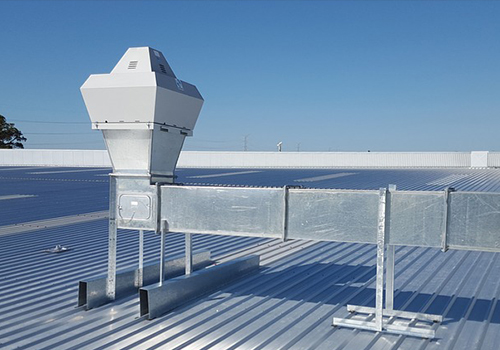Relay Used in HVAC-R Mechanical Systems

Relays play a crucial role in the functionality of HVAC-R (Heating, Ventilation, Air Conditioning, and Refrigeration) mechanical systems. These electromechanical devices serve as switches, controlling the flow of electrical currents within the system. In HVAC-R, relays are employed to manage various components, ensuring efficient operation and optimal performance.
HVAC-R stands for heating, ventilation, air conditioning and refrigeration mechanical system. In HVAC equipment, relays are often used as switches for power circuits such as compressors, fan motors, water pumps, and four-way valves. When in use, one end of the electronic relay control coil is connected to the power supply, and the other end is connected to the output end of the control component. Through the output control signal of the control component, the two ends of the relay control coil generate a potential difference and form a current loop to generate electromagnetic force. Under the action of the electromagnetic force and the inherent elastic force of the relay reed, the contacts of the relay are pulled in or released, so as to connect or disconnect the circuit of the electrical load power supply to control the operation or stop of the related equipment.
HVAC relays open or close circuits to turn equipment on and off. Also known as control relays, these magnetically operated switches are commonly used in fan motor operations such as air conditioning, heating, and ventilation systems.
Moreover, relays are crucial for protecting HVAC-R systems from electrical overloads. They act as safety mechanisms by interrupting the electrical circuit in case of excessive current flow. This feature prevents damage to expensive components and ensures the longevity of the entire system.
The versatility of relays extends to their application in defrost cycles within refrigeration systems. During these cycles, power relays help control the operation of heaters and ensure the removal of frost from evaporator coils. This not only enhances the efficiency of the refrigeration process but also prevents potential damage caused by ice buildup.
HVAC-R stands for heating, ventilation, air conditioning and refrigeration mechanical system. In HVAC equipment, relays are often used as switches for power circuits such as compressors, fan motors, water pumps, and four-way valves. When in use, one end of the electronic relay control coil is connected to the power supply, and the other end is connected to the output end of the control component. Through the output control signal of the control component, the two ends of the relay control coil generate a potential difference and form a current loop to generate electromagnetic force. Under the action of the electromagnetic force and the inherent elastic force of the relay reed, the contacts of the relay are pulled in or released, so as to connect or disconnect the circuit of the electrical load power supply to control the operation or stop of the related equipment.
HVAC relays open or close circuits to turn equipment on and off. Also known as control relays, these magnetically operated switches are commonly used in fan motor operations such as air conditioning, heating, and ventilation systems.
Moreover, relays are crucial for protecting HVAC-R systems from electrical overloads. They act as safety mechanisms by interrupting the electrical circuit in case of excessive current flow. This feature prevents damage to expensive components and ensures the longevity of the entire system.
The versatility of relays extends to their application in defrost cycles within refrigeration systems. During these cycles, power relays help control the operation of heaters and ensure the removal of frost from evaporator coils. This not only enhances the efficiency of the refrigeration process but also prevents potential damage caused by ice buildup.
